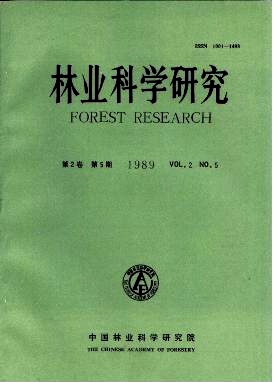PROVENANCE TRIALS AND PREDICTION OF SUITABLE PLANTING AREA BASED ON BIOCLIMATIC ANALYSIS FOR EUCALYPTUS GRANDIS IN CHINA
- Received Date: 1988-12-20
- Available Online: 2012-12-04
Abstract: Two trials of species/provenance of eucalypts have been carried out by the collaborated research between Chinese Academy of Forestry and Australian Centre for International Agriculture Research in the tropical and subtropical regions of China.The trial sites were chosen in Changtai County with 24°40'N, 117°50'E and in Qionghai County with 19°14'N, 110°28'E,in Fujian and Hainan Provinces respectively.Of the species tested on the both sites, Eucalyptus grandis was examined for the growth rates of height and diameter over 15 provenances.It was found that there were not any significant differences in the growth of height and diameter among provenances on Changtai site with mean height of 4.51 m and mean diameter of 4.2cm:and there were significant differences on Qionghai site with average values of 4.45m for height and 3.6cm for diameter.The 8 provenances with values of height higher than the trial mean on Changtai site were 14860 and 14861, both from EMBRAPA, Brazil, 14509 (Urbenville, Qld), 14431 (Belthorpe, Qld) and 13019 (Coffs Harbour, NSW) from the main range of the species, the rest three, 14393 (Mareeba), 14210 (Ravenshoe) and 14431 (Belthorpe) all from higher county in Queensland.The top 6 provenances in ranking on Qionghai site were 14420 (Ravenshoe), 13431 (Mt.Lewis), 14849 (Atherton), 14210 (Ravenshoe), 14838 (Cardwell) and 14861 (EMBRAPA, Brazil) were all from the tropical part of Queensland except the Brazilian.Two seedlots of South Africa, 13965 and 13365 performed the poorest on both sites.It was found that the results of both trials gave very different rank in height and diameter for provenances so that a marked genotype x environment interaction existed.The reason for this could be due to the two sites under different climate zones and soil types.Using GENSTAT programme, bioclimate analysis outlined a geographic area into which E.grandis could be introduced successfuly.This area would cross over 10 provinces from Wenzhou in Zhejiang Province down to south along the estern coast and to the regions in the south of Nanling Range, Hainan Id.and some seperate parts in Sichuan and Yunnan included.The climatic factors used for multivariate analysis were annual mean temperature (14℃), minimum temperature on record (-8℃), mean of minimum temperature of the coldest month (4℃),mean of maximum temperature of the hottest month (28-35℃), annual mean rainfall (1000 mm), the number of rain days per year and the number of month with precipitation less than 25 mm.





 DownLoad:
DownLoad: